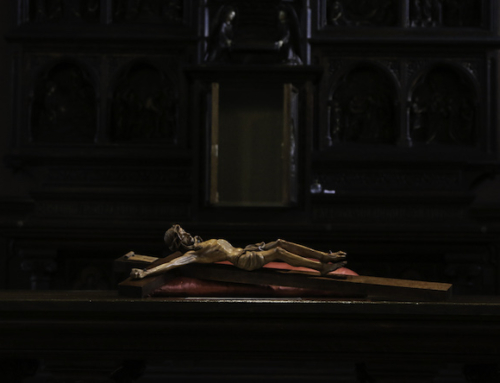Today is the first of many Fridays during Lent. Our penances are perhaps being refined and hopefully refining us as well. Last week, we heard about an interior aspect of this penitential season in relation to the Exodus. I would like to propose another aspect of penance, focusing more exteriorly. Have you thought much about the clothes you wear during Lent? Likely not, but it may be more worthwhile than you think. By way of example, Saint Dominic demonstrates the value of religious garb in penitential exercises and, by extension, any apparel worn for religious purposes.
There are numerous testimonies to Dominic’s sanctity, which manifested itself in various forms: never sleeping on a bed (if he even slept), drastically diluting his wine at table, praying through the night, fasting, etc. These details are reported by many witnesses, but there is another detail that is repeatedly mentioned: his religious habit. It was an uncomfortable outfit, which he always slept in. Part of Dominic’s penitential life, which was so salutary for himself and many souls, was his attention to his clothing. By no means did he admit of any disordered concern for his appearance—his habit was reported to be rather tattered. But his clothing was an important part of his austerity because it was both a sign for others and for himself.
Today, the purpose of a religious habit is often defended with only one of these elements in mind: it is a sign to others of our separation from the world and our consecration to God. But we, even religious, often forget the secondary element of the habit: it is a sign for the religious himself. Wearing the habit can be a penitential source of discomfort—both physically and socially. The habit doesn’t breathe well. It is mocked by a world that rejects consecration and its signs. But when these kinds of discomfort quite literally weigh upon his shoulders, the religious is challenged by his habit to remember: “I still belong to the Lord. I have stretched out my hands and been dressed by someone else, and now I must continually be converted to him in my consecration.”
Wearing the religious habit more continuously and intentionally can thus be a significant aspect of a consecrated person’s Lenten practices. But what about everyone else? I suggest that even non-religious men and women can follow the example of St. Dominic. Perhaps you can consider modifying the way you dress during this Lenten season. This is not to say that you should wear sackcloth and ashes to draw undue attention to yourself. But just as the religious wears the habit to remind him of his consecration, so you can use your clothing to remind yourself that you have put on Christ in baptism.
This Lent, let your clothing be a small penance that turns you away from the things of this world toward Christ crucified. At least for a season, reject what is vain and showy, and instead clothe yourself with a sign of Christ’s humble simplicity. If this sounds daunting, begin by carrying a sign perhaps no one else will see—whether a crucifix, a medal, or a rosary in your pocket—that reminds you alone of your conversion to Christ. By God’s grace, your external appearance will give way to the more noble clothing of the heart, and you will say with the prophet Isaiah:
I will rejoice heartily in the Lord,
my being exults in my God;
For he has clothed me with garments of salvation,
and wrapped me in a robe of justice,
Like a bridegroom adorned with a diadem,
as a bride adorns herself with her jewels.
✠
Photo by Fr. Lawrence Lew, O.P. (used with permission)







